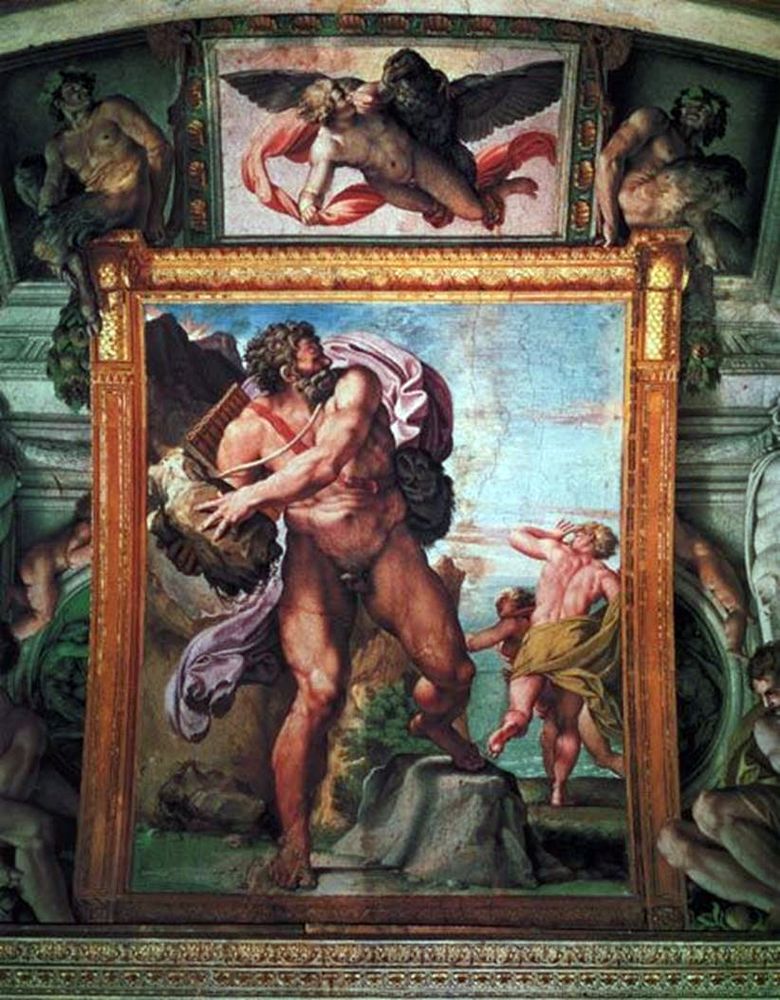
Like most of the frescoes of the Farnese Gallery, this work is written on a plot taken from Ovid’s Metamorphosis. In the opposite end of the gallery there is a picture, a steam room to the “Rage of Polyphemus”, where the background of this scene is depicted. Cyclops Polyphem fell in love with the marine nymph G-latte and long tried to win her heart by playing the flute. But Galatea never fell in love with the one-eyed Polyphemus and preferred the young shepherd Athis to him.
Seeing them together, Polyphemus was enraged and, in a fit of jealousy, killed the youth, hurling a huge piece of rock into it. Galatea for a long time was sad about the death of Assis, and then turned her unfortunate lover into a river. Apparently, Annibale Carracci in the work on the “Wrath of Polyphemus” followed the instructions of Leonardo da Vinci, who wrote that “he who wants to depict a stone thrower must turn his legs towards the chosen goal, and his body in the opposite direction.”
Above the “Wrath of Polyphemus” is a panel where another scene from Ovid is depicted – “Abduction of Ganymede”.
 In love with Polyphemus by Annibale Carracci
In love with Polyphemus by Annibale Carracci Ira Polyphemus – Annibale Carracci
Ira Polyphemus – Annibale Carracci Triumph of Bacchus and Ariadne by Annibale Carracci
Triumph of Bacchus and Ariadne by Annibale Carracci Colère de Polyphème – Annibale Carracci
Colère de Polyphème – Annibale Carracci Landscape with Polyphemus by Nicolas Poussin &;; &; nbsp
Landscape with Polyphemus by Nicolas Poussin &;; &; nbsp Three Marys at the grave of the Lord by Annibale Carracci
Three Marys at the grave of the Lord by Annibale Carracci Venus, Adonis and Cupid by Annibale Carracci
Venus, Adonis and Cupid by Annibale Carracci Lord, what are you? by Annibale Carracci
Lord, what are you? by Annibale Carracci